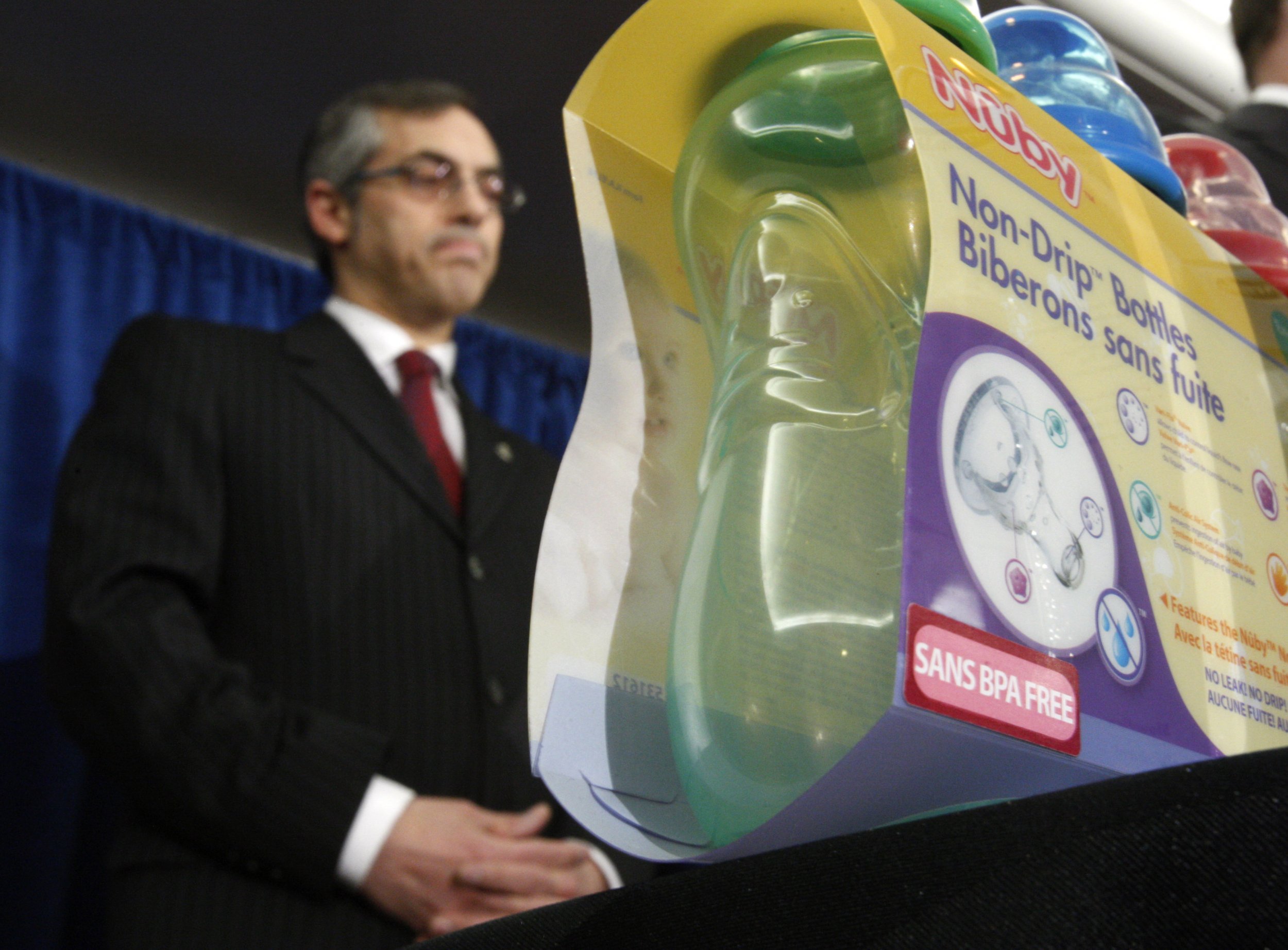
Bisphenol-A, or BPA, found in many types of plastics, bottles and thermal papers like receipts, has been spurned by many consumers due to evidence that it is an endocrine disruptor. Research has shown that in several types of animals, it interferes with the activity of hormones like estrogen and causes problems in reproduction, development, brain function and cardiovascular health.
Following consumers' concerns, American manufacturers phased out the use of BPA in baby bottles and sippy cups by 2012. But it remains in many types of plastic and a wide variety of products. Looking for an alternative, some manufacturers use a chemically similar compound called bisphenol-S, or BPS, which several studies suggest may have similar negative effects on the body.
Adding to this accumulating body of work, a new study published this week in the Proceedings of the National Academy of Sciences shows that BPA and BPS both impair the growth of neurons in zebrafish. After being exposed to bisphenol, the fish began to behave as hyperactively as larvae, says study author Deborah Kurrasch, a developmental neuroscientist at the University of Calgary in Alberta, Canada.
The findings raise concerns that both of these chemicals may impair brain development and cause long-term behavioral problems in humans, Kurrasch adds.
Perhaps most important, these effects were seen when developing fish embryos were exposed to extremely small concentrations of BPA and BPS—the same level at which the chemicals are found in two rivers in Alberta, for example.
"There definitely has been controversy about whether low-dose exposures to these chemicals are a cause for concern, and...this paper shows that very low doses at the kinds of levels that wildlife are exposed to, and even below the levels humans are often exposed to, are relevant and causing biological effects," says Andrea Gore. She is a professor of pharmacology and toxicology at the University of Texas at Austin who wasn't involved in the study.
In the study, researchers exposed zebrafish embryos to tiny concentrations of BPA—"1,000-fold lower than the accepted human daily exposure," the paper states—and BPS. They found that these embryos developed 180 percent and 240 percent more new neurons, respectively, in the hypothalamus, a part of the brain thought to behave abnormally in attention deficit hyperactivity disorder (ADHD). It also helps regulate many of the body's most important hormones.
But this increase is not a good thing, Gore says; the number of cells birthed during this phase of neurogenesis is exquisitely controlled and carefully timed, to ensure proper function later in life. In the study, the abnormal growth led to an altered hypothalamus structure and, subsequently, the strangely hyperactive zebrafish behavior.
There are of course many differences between zebrafish and humans, but these creatures are a widely accepted non-human model that is increasingly being used to help develop all kinds of human drugs, Gore says. And neurogenesis in the hypothalamus happens very similarly in all vertebrates, or animals with backbones, she says.
"The birth of neurons in the developing embryo happens in a very similar way, whether you're talking about a fish or humans," Gore says. "Of course, we have a much more complicated brain…but it's not a big stretch to assume that those environmental chemicals that perturb this process in zebrafish are doing the same kind of thing in mammals, including humans."
There are also two epidemiological studies that show that children of women who had higher levels of BPA in their urine while pregnant had a slightly increased risk of developing ADHD, Kurrasch says.
And studies in mice also suggest that BPA impairs the growth of neurons, and have linked embryonic exposure to the chemical with behavioral abnormalities like hyperactivity, she says.
"If you see effects with BPA over and over again on lots of different species, I think it's reasonable to conclude that it has similar effects on the developing human brain," says Heather Patisaul, an endocrinologist at North Carolina State University who wasn't involved in the study.
There is one more major implication of the study, Gore says. It has long been known that BPA mimics estrogen, a hormone particularly important for female development. But this study shows BPA and BPS are also behaving—at least at this point in brain development—like androgens, a class of hormones that includes testosterone and which are found in higher quantities in males.
This is "a potentially new mechanism in which BPA is affecting the body, which is quite compelling" and concerning, Patisaul says.
The American Chemistry Council, a trade group that represents plastic manufacturers, didn't appear to be impressed by the study. "The relevance of this limited study on zebrafish, as asserted by the authors, is not at all clear, and it would not be scientifically appropriate to draw any conclusions about human health based on this limited experiment," they wrote in a statement.
The group references the fact that the Food and Drug Administration has stated that BPA is generally safe to use in food and beverage containers, and the agency just reiterated its approval of the use of the substance in can linings.
But it seems prudent to mention that there are links between government activities regarding BPA and the plastics industry. For example, a 2008 investigation by the Milwaukee Journal Sentinel stated that "a government report claiming that bisphenol A is safe was written largely by the plastics industry and others with a financial stake in the controversial chemical."
Uncommon Knowledge
Newsweek is committed to challenging conventional wisdom and finding connections in the search for common ground.
Newsweek is committed to challenging conventional wisdom and finding connections in the search for common ground.
About the writer
Douglas Main is a journalist who lives in New York City and whose writing has appeared in the New York ... Read more





